Last updated on June 25th, 2023 at 04:02 am
Doing laundry is a regular chore for many people, and properly loading your washing machine plays a crucial role in achieving clean and fresh-smelling clothes. Many people, however, disregard the significance of properly loading their washing machines, which can lead to disappointing cleaning outcomes, damaged clothing, or even broken machines.
For optimum efficiency and to prolong the life of your appliance, we will walk you through the process of loading your washing machine properly in this tutorial. This article will arm you with the information required for productive and efficient laundry days, from comprehending the fundamentals to addressing frequent challenges.
the Basics of Loading a Washing Machine
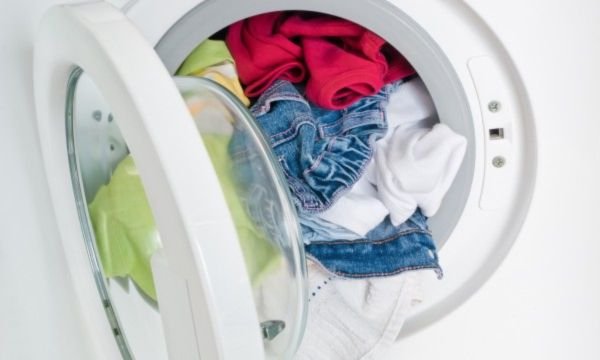
Photo Credit: yellowpages
One may easily load a washing machine by following a few straightforward procedures. The following explanation will help you comprehend the fundamentals of loading a washing machine:
Sort your clothes
Sort your clothes into distinct piles according to the color, fabric type, and wash temperature needs before putting them in the washing machine. This step guarantees that identical goods are washed together and guards against color bleeding or harm to fragile textiles.
Prepare the machine
Make sure the washing machine is clean and free of any debris. Search the drum for any things that may have survived the last wash. Make sure the detergent dispenser is also tidy and prepared for usage.
Measure the detergent
Read the detergent packaging to determine the appropriate amount of detergent for your load size and the level of dirtiness. While using too little detergent may result in less thorough cleaning, using too much might result in excessive sudsing or residue.
Load the clothes
Open the washing machine lid or door and place the sorted laundry inside. Avoid overloading the machine as this might reduce cleaning effectiveness and put too much stress on the device. Give the clothing room to move around during the wash cycle.
Close the Lid or Door
Once you’ve loaded the clothes, ensure that the lid or door is securely closed. Nowadays, most washing machines include safety features that stop them from working with the lid or door open.
Add Detergent
Depending on how your washing machine is made, either pour the measured detergent into the detergent dispenser or straight into the drum where the garments are being washed. For pre-wash and main wash detergents, some machines have separate compartments. Observe the directions provided by the manufacturer for your particular equipment.
Choose the Wash Settings
Start the washing machine, then choose the proper wash settings. These settings often include choices for the water temperature, length of the wash cycle, and kind of wash (such as regular, delicate, or heavy-duty). To choose the appropriate settings for your load, see the machine’s user handbook.
Start the Wash Cycle
Once you’ve set the desired wash settings, press the start button or initiate the wash cycle according to your machine’s instructions. The chosen wash program will start the washing machine filling with water, agitating the clothes, and washing them.
Wait for the cycle to finish
Permit the washing machine’s wash cycle to finish. The majority of contemporary machines incorporate a display or indication lights to illustrate the cycle’s progress. Depending on the parameters used and the kind of wash, the cycle’s length will change.
Unload the clothes
Once the wash cycle is complete, open the lid or door of the washing machine and carefully remove the freshly washed clothes. In accordance with the directions for clothing care, shake out any creases and prepare the items for drying.
To get more detailed instructions and suggestions, it’s always a good idea to refer to the user manual that came with your washing machine. Keep in mind that these are only basic recommendations. Your washing machine will operate at its best and last as long as possible if you follow the manufacturer’s instructions.
Explaining the Different Parts of a Washing Machine

Photo Credit: popsugar
A washing machine is made up of numerous crucial components that work together to effectively clean your garments. Here is a breakdown of the many components of a common washing machine:
Drum
The drum, also known as the tub, is the central part of the washing machine where you place your clothes. Throughout the washing cycle, it spins to let water and detergent permeate the fabric, agitate the clothing, and remove dirt.
Agitator/Pulsator
Some washing machines have an agitator or pulsator, which is a protruding mechanism in the center of the drum. In order to agitate the clothing and speed up the washing process, the agitator swings back and forth. However, as many contemporary models use other technologies for washing, not all washing machines include an agitator.
Drain Pump
The drain pump is in charge of draining the machine’s soiled water. The drain pump turns on following the wash cycle and pumps water out of the drum and into the drainage system.
Water Inlet Valve
This valve regulates the amount of water that enters the washing machine. When the right times of the wash cycle are reached, it is connected to the water supply and opens or closes to let water into the machine.
Dispenser
Inside the washing machine, there is a chamber called the dispenser where you may put laundry additives like detergent and fabric softener. Depending on the machine, certain items may have their own compartments, and the dispenser releases them as needed during the wash cycle.
Control panel
The washing machine’s front or top-mounted control panel is the interface through which you may choose the preferred wash parameters. It often has buttons, knobs, or a digital display to regulate settings including the water temperature, the length of the wash cycle, and any extra functions.
Motor
The washing machine’s motor drives the rotation of the drum and other mechanical parts. During the wash cycle, it delivers the required force to agitate and move the clothes.
Belt
Some washing machines link the motor to the drum via a belt. The belt efficiently transfers the motor’s power to revolve the drum. Belts may deteriorate and need to be replaced over time.
Lid or Door
The washing machine’s lid or door gives you access to the drum so you may load and unload laundry. Additionally, it has safeguards that stop the machine from working while the lid or door is open.
Filters
To capture lint, dirt, and other particles during the wash cycle, washing machines frequently contain filters. These filters keep the machine operating efficiently by preventing drain system obstructions. As part of maintenance, it’s crucial to frequently clean or replace the filters.
These are the washing machine’s fundamental components. Although other models and brands could have more features and parts, being familiar with these essential ones will give you a solid grasp of how a washing machine works. For comprehensive details on the components and features of your washing machine, always consult the individual user manual that the manufacturer has given.
Choosing the Right Detergent and Fabric Softener
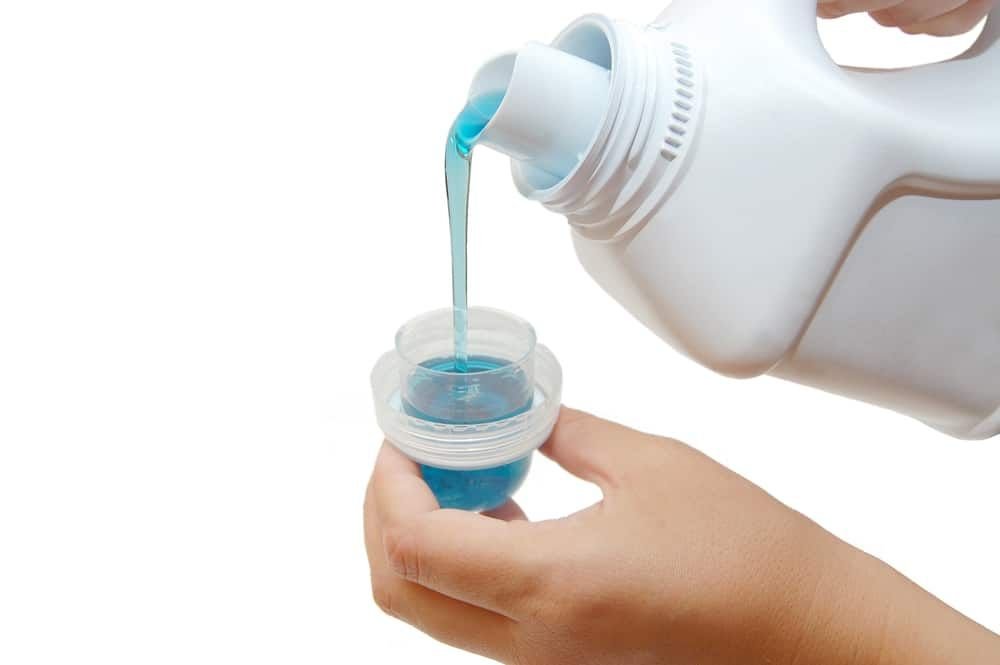
Photo Credit: shippingschool
To guarantee proper cleaning and care for your clothes, selecting the correct detergent and fabric softener is crucial. To assist you in making the best decisions, take into account the following:
Detergent
Read the labels carefully. Seek for detergents made expressly for your kind of washer (top-load, front-load, high-efficiency, etc.). Additionally, be sure the detergent is appropriate for the water temperature (cold, warm, or hot) that you want to use.
Take into account your washing requirements: If your garments are very dirty, pick a detergent with potent stain-fighting properties. Choose a fragrance-free or hypoallergenic detergent if you have allergies or sensitive skin. Detergents designed for particular fabric categories, including delicates or sportswear, are also available.
Comply with dosage recommendations: Depending on the size of your load and the degree of dirtiness, use the required amount of detergent. While using too little detergent might result in less efficient cleaning, using too much could cause excessive sudsing and could leave residue on your clothes.
Take into account the environment’s impact: Some detergents are made with less phosphate or biodegradable chemicals to be more ecologically friendly. Look for eco-friendly or green detergents if sustainability is a priority for you.
Fabric Softener
Recognize how fabrics interact with one another. Fabric softeners are frequently used to make clothing feel softer, less staticky, and scented. Fabric softeners do not work with all textiles, though. Avoid putting fabric softener on materials like towels, athletic gear, or microfiber since it may damage their ability to absorb moisture or wick it away.
Pick the proper kind: Fabric softeners are available as dryer sheets or liquids. Although they both function well, liquid softeners are frequently suggested for greater dispersion and coverage. Dryer sheets are practical to use in the dryer and have the added benefit of lowering static cling.
Preferences in scent: Fabric softeners are available in a range of smells. Pick a scent that you like and that goes well with your attire. If you are allergic to scents, think about hypoallergenic choices.
Use as directed: Follow the instructions on the fabric softener packaging for the correct dosage and timing of use. While applying too little fabric softener could not give your clothing the proper softness or aroma, using too much could leave a residue on them.
Combination products
Some detergents include fabric softeners or smell enhancers built right in. These all-in-one goods may be useful, particularly if you favor a particular combination. Keep in mind, nevertheless, that they might not provide the same customizing possibilities as using separate detergent and fabric softener.
Experiment and adjust
Each washing scenario is different, and preferences might change. To find the blend that works best for you and your clothing, feel free to experiment with various detergent and fabric softener brands, varieties, and smells.
For the greatest results, please adhere to the directions on the detergent and fabric softener packaging. Additionally, pay attention to any particular care instructions included with your clothing, as some may call for specialized detergents or advise against using fabric softeners at all.
Sorting Laundry by Color, Fabric, and Level of Dirtiness
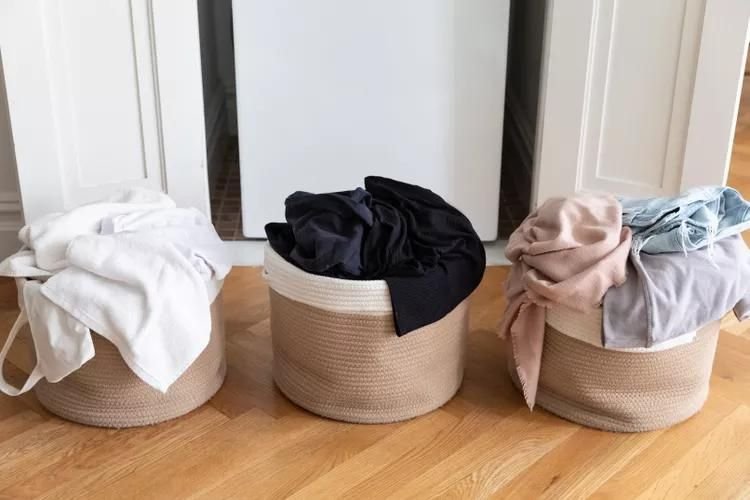
Photo Credit: thespruce
Prior to washing, sorting your laundry is an essential step to maintain the quality of your clothing and guarantee thorough cleaning. Following are some tips for organizing laundry by color, fabric, and degree of dirtiness:
Color
Sort your clothes into lights and darks: Divide your laundry into lights and darks. By doing this, colour bleeding—the process by which colours from darker clothing might transfer to lighter ones—is prevented. Dark and light-coloured clothing should be washed separately.
Take additional sorting into consideration: To ensure that extremely soiled or stained goods receive extra care throughout the wash cycle, you might wish to put them into a distinct pile regardless of colour.
Fabric
Delicate materials: Keep lighter fabrics like wool, silk, chiffon, or lace apart from delicate fabrics. Delicate things need to be handled with greater care, and they may need to be hand cleaned separately or on a delicate or hand wash cycle.
Heavy materials: Because they can handle more vigourous agitation, heavier fabrics like towels, jeans, or beds can be washed simultaneously. To avoid straining the machine and affecting cleaning effectiveness, avoid stuffing the washing machine with too many heavy goods.
Special care items: The labels of some goods may provide detailed care instructions. Sort them out and wash them according to the directions. Examples include clothing that should only be dry-cleaned or that needs cold water or a certain wash cycle.
Level of dirtiness:
Heavily dirty things: Distinguish between heavily and lightly filthy clothing, such as muddy or discoloured goods. Heavy dirty items should be washed separately to avoid transmitting dirt or stains to other garments during the wash cycle.
Clothes worn on a daily basis: The majority of daily attire is classified as somewhat dirty. As long as the clothes have comparable color and fabric concerns, they can be washed together.
Items that are delicate or lightly dirty: Clothes that are delicate or lightly soiled but don’t need a thorough washing can be categorized individually. This helps shield things from any possible harm caused by more intense washing or abrasive contact with extremely filthy objects.
Remember that these suggestions are only general advice; you should always follow the care instructions provided with each individual piece of clothing. If there are any special directions or criteria for sorting, always check the labels on the clothing.
Sorting your laundry in advance protects your clothing and guarantees that washing will be as effective as possible. It allows you to tailor the wash settings to the requirements of each load while also guarding against color fading, shrinkage, and damage to sensitive textiles.
Setting Up Your Washing Machine for Optimal Performance
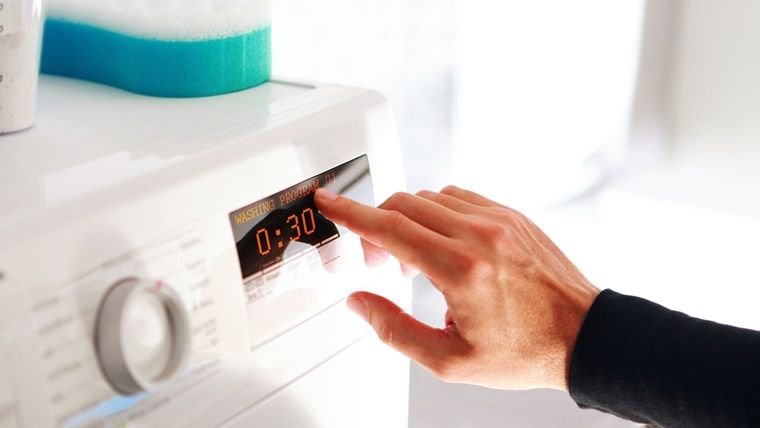
Photo Credit: choice
Your washing machine has to be set up correctly in order to work at its best and last as long as possible. The following instructions will help you set up your washing machine:
Location
Select a level surface: To avoid vibrations or excessive movement when operating, place the washing machine on a solid, level surface.
Adequate room: Make sure the machine has adequate room around it for optimum ventilation as well as access to connections and controls. To find out the recommended clearance distances, see the manufacturer’s instructions.
Connections
Water supply: Use the supplied hoses to attach the washing machine to a water source. Make sure there are no leaks and that the connections are tight. Periodically inspect the hoses for wear or damage.
Drainage: Join the drain hose of the washing machine to an appropriate drainage location. Make sure the hose is not kinked or constrictive so that water may flow freely throughout the drain cycle.
3. Leveling:
Level the machine: Make sure it is level from front to back and side to side by using a leveling tool or adjusting the machine’s feet. A machine that is correctly leveled helps reduce noise and vibrations while it is in operation.
4. Electrical:
Power supply: Connect the washing machine to an electrical outlet that is grounded and that satisfies the voltage and current specifications listed in the user handbook. Avoid using extension cords or adapters since they might not supply enough power and might be dangerous.
5. Read the user manual:
Become familiar with the manufacturer’s instructions: Depending on the model, there may be certain setup requirements or suggestions. Read the user handbook carefully to understand any special features, upkeep recommendations, or safety measures.
6. Routine maintenance:
Clean the drum and dispensers: Follow the manufacturer’s instructions for routinely cleaning the drum, detergent dispensers, and any filters. This aids in avoiding the accumulation of residue, mold, or odors.
Inspect hoses and connections: Routinely look for any symptoms of wear, leaks, or damage in the hoses, water intake valve, drain pump, and electrical connections. Any broken parts should be replaced or repaired right away.
Prevent overloading: To prevent overloading the machine, adhere to the manufacturer’s suggested load capacity requirements. Overloading can wear out the motor, reduce the effectiveness of cleaning, and even harm the device.
Execute maintenance cycles: Some washing machines include self-cleaning or maintenance cycle settings. Run these cycles on a regular basis to assist the machine get rid of any buildup or residue.
You can maximize the functionality and lifetime of your washing machine by carrying out the setup and maintenance procedures described below. Additionally, always follow the precise guidelines and advice the manufacturer has supplied for your particular model.
Step-by-Step Guide to Properly Loading Your Washing Machine

Photo Credit: techstory
It’s critical to correctly load your washing machine to ensure thorough cleaning, avoid harm to your clothing and the machine, and maximise efficiency. Here is a step-by-step instruction sheet to assist you properly load your washing machine:
Sort your laundry
Divide it into distinct heaps according to the colour, fabric, and degree of soiledness. By doing this, you may avoid color bleed and make sure that like products are cleaned together.
Check pockets
Before adding any clothing to the washer, look inside each pocket for any coins, tissues, or other tiny things that can get caught during the wash cycle and harm other articles of clothing or the washer itself.
Prepare the machine
Make sure the washing machine is clean and free of any debris from previous loads. Clean the drum thoroughly and get rid of any lint or debris that may have collected. Additionally, check the detergent dispenser and take out any remaining fabric softener or detergent.
Load the machine
Lift the lid or open the door to reach the drum, depending on the sort of washing machine you have.
Add clothing: Start by loading the machine with the bulkier things, such bed sheets or towels, and distributing them evenly across the drum. Then, add the remaining clothing, dividing them equally and taking care not to overcrowd the washing machine. Give the water and detergent room to go around without restriction.
Close the lid or door
Once you have loaded the clothes, close the lid or door securely. With the help of safety features, modern washing machines can no longer operate if the lid or door are not securely closed.
Measure and add detergent
Follow the manufacturer’s instructions and the dosage recommendations on the detergent packaging to determine the appropriate amount of detergent for your load. Depending on how your washing machine is built, either add the detergent straight to the drum or utilise the detergent dispenser.
Select the wash settings
Choose the appropriate wash settings for your load. Depending on the kind of clothing and degree of dirtiness, choose the water temperature, length of the wash cycle, and any unique features. The user manual for your system might provide instructions on how to choose the appropriate settings.
Start the wash cycle
After choosing the appropriate wash settings, push the start button or start the wash cycle as directed by your machine. The washer will start to fill up with water and agitate the garments as it cleans them in accordance with the presets.
Wait for the cycle to finish
Permit the washing machine’s wash cycle to finish. The majority of machines have screens or indicators that reflect the cycle’s progress. Avoid opening the lid or door while the cycle is running since this might stop the washing.
Unload the clothes
Once the wash cycle is complete, open the lid or door and carefully remove the freshly washed clothes. In accordance with the directions for clothing care, shake out any creases and prepare the items for drying.
By following these instructions, you can help guarantee that both your washing machine and your garments are cleaned successfully. Always consult the user handbook for your machine for detailed instructions and suggestions as various models may have different features and loading specifications.
Common Mistakes to Avoid When Loading Your Washing Machine
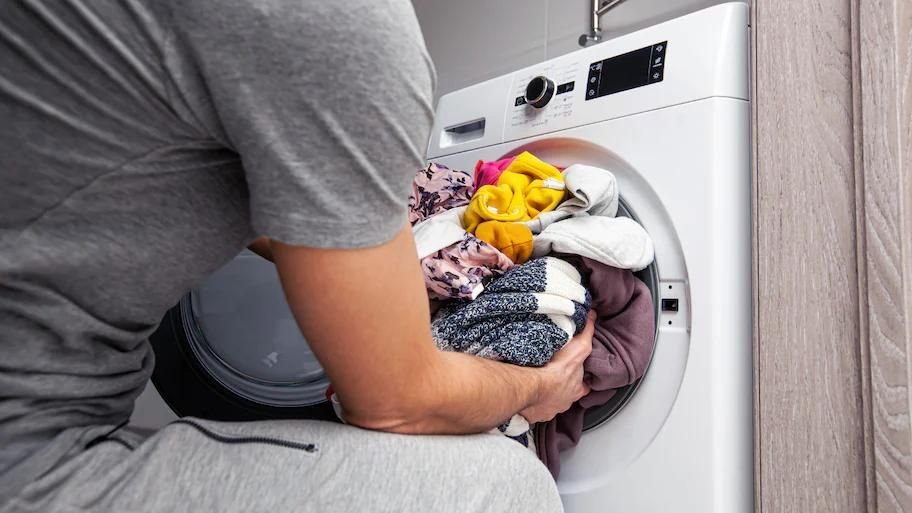
Photo Credit: angi
To get the best cleaning results and minimize potential problems, it’s crucial to avoid several frequent blunders while filling your washing machine. Here are some typical errors to avoid:
Overloading the machine
Avoid overstuffing the washing machine with too many clothes. Inadequate cleaning and pressure on the machine’s motor and components might result from overloading, which can also cause insufficient water and detergent dispersion. For your machine’s maximum load capacity, heed the manufacturer’s advice.
Underloading the machine
On the other hand, loading the machine with only a few items can lead to an imbalance during the wash cycle. It can result in excessive vibrations or make the machine’s sensors sense an uneven load, interrupting cycles or leaving cleaning tasks unfinished. Use the proper water level setting if your load is light, or think about adding a few extra objects of a similar nature to make it heavier.
Mixing incompatible colors
Sorting your laundry by color is crucial to prevent color bleeding. Avoid washing dark and light-colored clothing in the same load, especially if you’re unsure of the colorfastness of either. Other clothing in the load can become stained by even one bleeding item. According to colour, sort your clothing into piles and wash it in various cycles.
Neglecting delicate items
Delicate fabrics require special care to prevent damage during the wash cycle. Do not wash delicate things alongside products made of thicker fabrics or with hooks, zippers, or other potentially abrasive features. Use a mild or delicate cycle, and for further protection, think about putting delicate things in a mesh washing bag.
Ignoring garment care instructions
Always look for particular washing directions on the care labels of your clothing. Some clothing may need specific handling, such as hand washing, cold water use, avoiding particular cycles or detergents, etc. Maintaining the durability and quality of your clothing is made easier by following the suggested care procedures.
Too much or too little detergent is used
For successful cleaning, the right amount of detergent must be used. Too much detergent might leave residue on your clothes and cause excessive sudsing, poor rinsing, and washing. However, employing too little detergent may result in your garments not being fully cleaned. Follow the dosage instructions on the detergent label and make any necessary adjustments based on the size and dirtiness of your load.
Forgetting to check pockets
Always look inside your pockets for any anything that might harm your clothing or the washing machine before loading them. During the wash cycle, objects like coins, tissues, pencils, or keys can create blockages, leaks, or damage.
Using incorrect water temperature
Pay attention to the recommended water temperature for your clothes. Using hot water to wash goods that should only be cleaned in cold or warm water can cause delicate textiles to lose their shine, shrink, or lose color. In accordance with the instructions on the care labels, alter the water’s temperature.
Neglecting routine maintenance
For your washing machine to operate at its best, proper maintenance is required. Cleaning the detergent dispensers, lint filters, or the drum on a regular basis prevents residue buildup, odour, and decreased efficiency. For detailed maintenance instructions, consult the user manual for your device.
You may guarantee that your clothing is thoroughly washed, avoid harm to your clothing and washing machine, and prolong the life of both by avoiding these frequent blunders.
Tips for Efficient and Effective Washing Machine Use

Photo Credit: greatliving
Here are some suggestions for making the most of your washing machine and ensuring proper use:
Sort your laundry properly
Before filling the washer, arrange your clothes according to color, fabric type, and degree of dirtiness. This stops color bleed-through, enables proper wash settings, and guarantees the best cleaning outcomes.
Utilize the proper fabric softener and detergent
Pick out detergents made for the sort of washing machine you have and the water temperature you want to use. Take into account your clothing’s requirements, such as the necessity for hypoallergenic or stain-resistant materials. Choose fabric softeners that are appropriate for your textiles and tastes and follow the dose directions.
Pre-treat stains
For tough stains, consider pre-treating them with stain removers or by applying a small amount of detergent directly to the affected area. To enhance stain removal, wait a few minutes before starting the wash cycle.
Select appropriate wash cycles and settings
Choose the right wash cycle and settings based on the fabric type, level of dirtiness, and garment care instructions. For fragile things, use mild cycles, and for highly dirty clothing, use more vigorous cycles. Choose a water temperature that is suitable for your clothing and safe to use.
Optimize load size
Avoid overloading or underloading the washing machine. By adhering to the manufacturer’s guidelines for load capacity, strike the correct balance. Underloading might result in imbalances and poor machine performance while overloading could result in subpar cleaning.
Use cold water when possible
Washing clothes in cold water can save energy and help preserve the colors and integrity of your garments. For ordinary clothing, cold water is frequently sufficient unless otherwise specified on the care label.
Clean the machine regularly
Maintain your washing machine by cleaning it regularly. Clean the filters, detergent dispenser, and drum of any lint, dirt, or leftovers. To avoid odours and preserve peak performance, run cleaning cycles or use cleaning products suggested by the manufacturer.
Avoid leaving wet clothes in the machine
Promptly remove your clothes from the washing machine after the wash cycle is complete. Wet clothing left in a washing machine for a lengthy period of time may acquire a musty smell.
Properly dry clothes
Follow garment care instructions for drying your clothes. Use the proper drying settings while air-drying, line-drying, or using a dryer. To avoid shrinking or ruining your clothing, be aware of textiles that are heat-sensitive and refrain from over-drying.
Regularly inspect and maintain hoses
Check the water supply and drain hoses for any leaks, cracks, or signs of wear. To avoid water damage and guarantee that your washing machine is operating properly, replace broken hoses right away.
These recommendations will help you prolong the life of your washing machine, maintain your clothing in outstanding condition, and maximise its efficiency and effectiveness. Always consult the user manual for your equipment for detailed instructions and recommendations.
Problem-solving and Troubleshooting

Photo Credit: ifixappliances
Troubleshooting and problem-solving techniques will assist you in locating and perhaps resolving any difficulties you may be having with your washing machine. Here are a few typical issues and solutions you may use:
Machine not turning on
Inspect the power source: Make sure the washing machine is connected to a working electrical socket properly. Plugging another gadget into the outlet will confirm that it is powered.
Inspect the power cable: Look for any damage or loose connections in the power cord. Replace the cord if required, or get help from a specialist.
Machine not filling with water
Inspect the water supply: Make sure the machine’s water supply valves are completely open and the water is flowing freely. Check the hoses for clogs or kinks.
Clear the input filters: Debris and silt can block the inlet filters over time. To enhance water flow, take the filters out and clean them. For instructions unique to your system, consult the user manual.
Machine not draining:
Consider checking the drain tube to make sure it is straight and unkinked or obstructed. Check that the drain hose is properly positioned with respect to the machine to enable adequate drainage.
Clean the drain pump filter: Lint, dirt, or tiny items might clog the drain pump filter. Locate the filter and clean it in accordance with the manufacturer’s recommendations.
Excessive noise or vibration
Level the appliance: Make sure the washer is correctly levelled. In order to attain a steady posture, adjust the feet or use a levelling tool.
Inspect the equipment for overloading, which can result in imbalances and excessive vibrations. Resize the load and spread the clothing in the drum evenly.
Examine the drum: Check for any foreign items that could be making noise or vibrations, such as coins or buttons. If you find any obstacles, remove them.
Foul odors
Clean the drum: To get rid of any mould or residue that might produce odours, regularly clean the drum, detergent dispenser, and rubber gasket. Think about doing routine cleaning cycles with dedicated washing machine cleansers.
Leave the door open: After the washing cycle has over, leave the lid or door of the washer open to let ventilation and drying occur, preventing the development of mould and mildew.
Error codes displayed
Consult the user manual: Error numbers signify certain problems with the device. For a list of error codes and the associated troubleshooting procedures, go to the user guide or manufacturer’s website. To fix the problem, take the suggested measures.
It is advised to contact the manufacturer’s customer support or get help from a reputable appliance repair business if you experience ongoing or complicated problems with your washing machine. They may offer advice and assist in finding a practical and secure solution to the issue.
Frequently Asked Questions
1. How often should I clean my washing machine?
To avoid residue accumulation and odors, it is advised to clean your washing machine once every two to three months. However, more regular cleaning can be required if you spot any problems, including mold or mildew.
2. Can I wash different fabric types together?
To avoid damage or color bleed, it is normally preferable to separate laundry by fabric type. Some clothes, including casual wear made of comparable fabrics, can, nevertheless, be washed together. Always read the care instructions before sorting.
3. What should I do if my washing machine stops mid-cycle?
Check to see if your washing machine is getting electricity before continuing if it stops mid-cycle. The power supply, fuse, and circuit breaker should all be checked. Consult your machine’s handbook or get help from a specialist if the problem continues.
4. Is it necessary to use fabric softener every time?
For every load, fabric softener is not essential. It may be applied to your clothing to improve the softness and smell. To preserve their performance or absorbency, certain materials, such as towels or sporting gear, might not need fabric softener.
5. How can I prevent my clothes from getting tangled?
Before placing clothing with delicate patterns in the washing machine, secure buttons, close zippers, and turn them inside out to prevent tangling. Additionally, try to avoid overloading the machine because it might cause more tangling.
Conclusion
In conclusion, correctly loading your washing machine is an essential step in making sure that your clothing get cleaned well and that the machine lasts a long time. You may load your machine in a way that encourages even distribution of the clothing, avoids overloading or underloading, and permits ideal water and detergent circulation by carefully following the step-by-step instructions.
To avoid colour bleed and get the best washing results, remember to separate your laundry by colour, fabric type, and degree of dirtiness. Given the demands of your clothing and the needs of the machine, select the right detergent and fabric softener. Pre-treat stains as necessary and handle fragile things separately.
A clean and effective wash is ensured by properly setting up your washing machine, which includes cleaning the drum and inspecting the detergent dispenser. The washing process is further improved by choosing the appropriate wash settings, according to garment care instructions, and avoiding frequent blunders such as combining unrelated colors or skipping maintenance chores.




